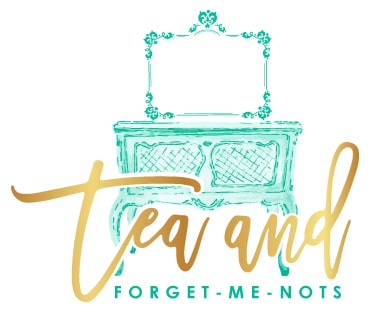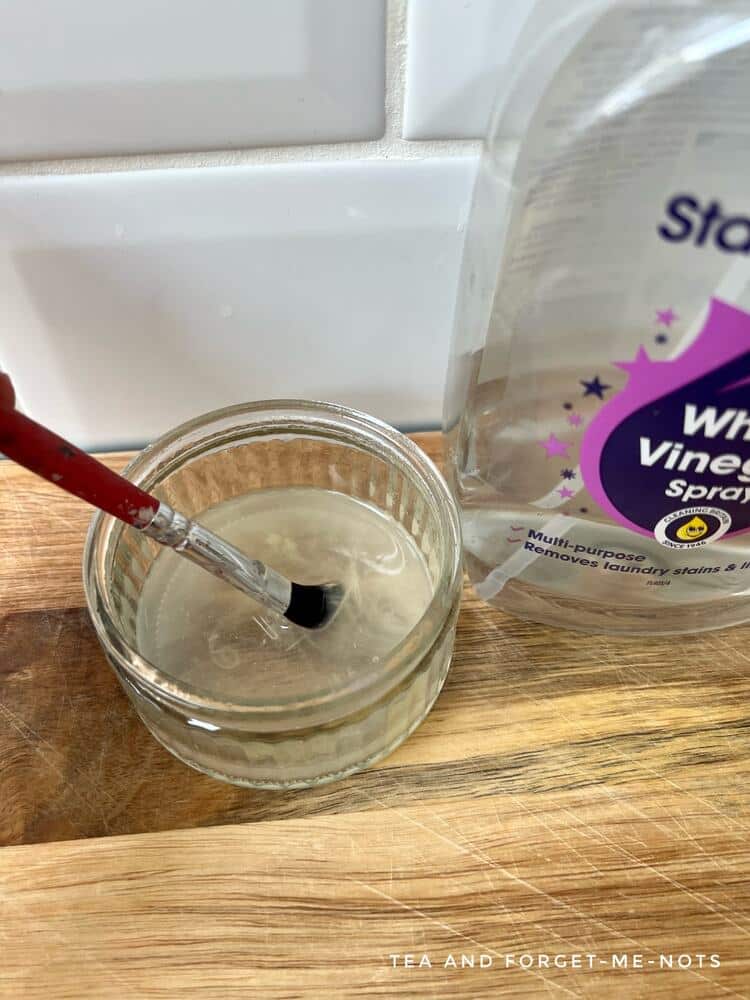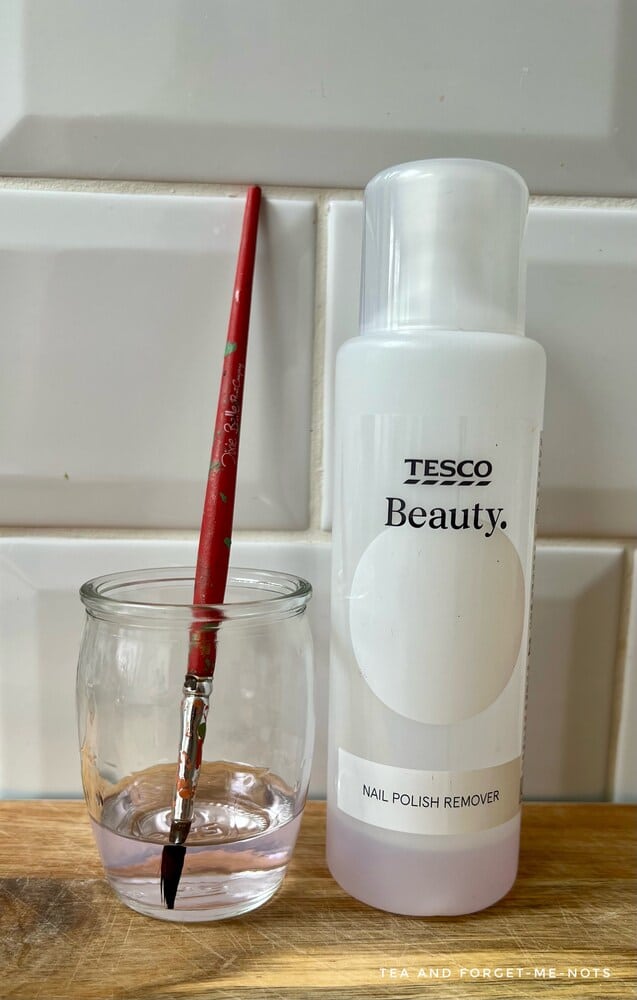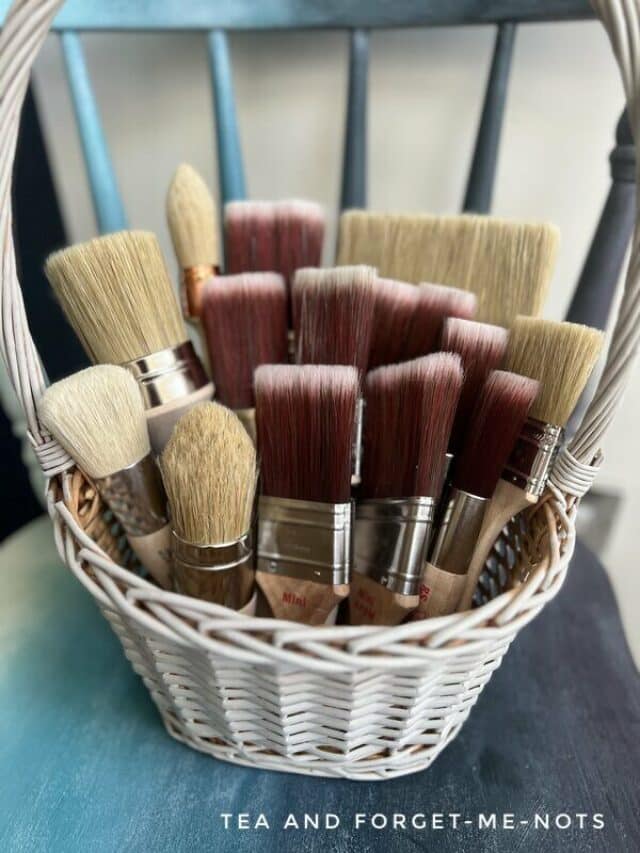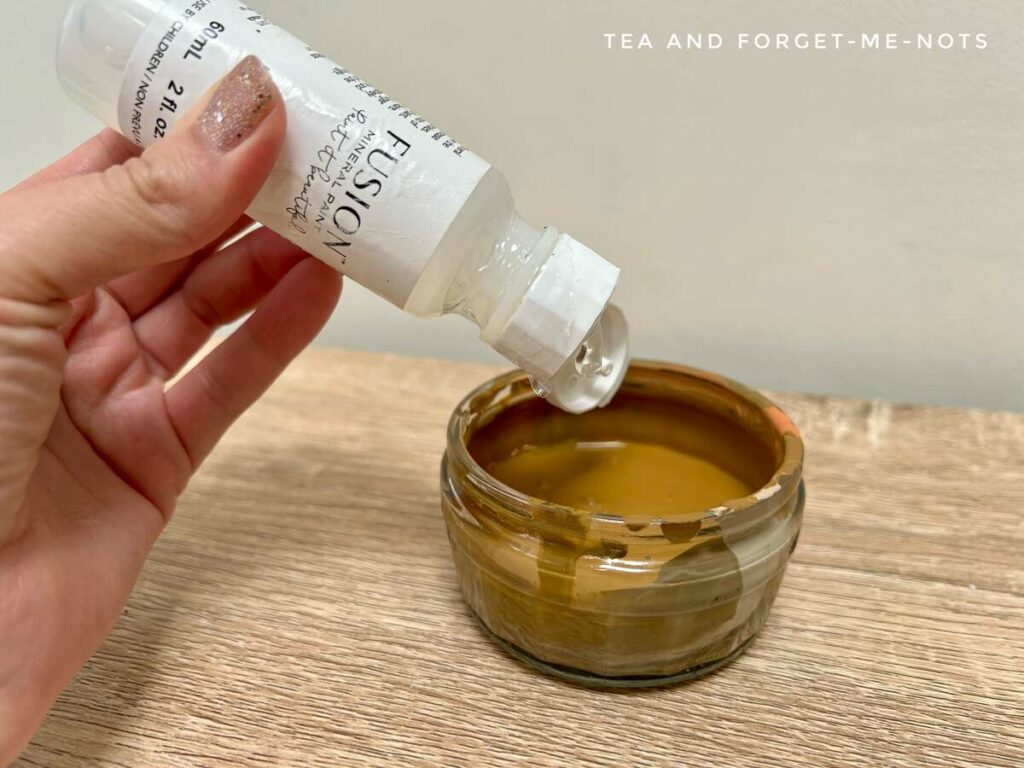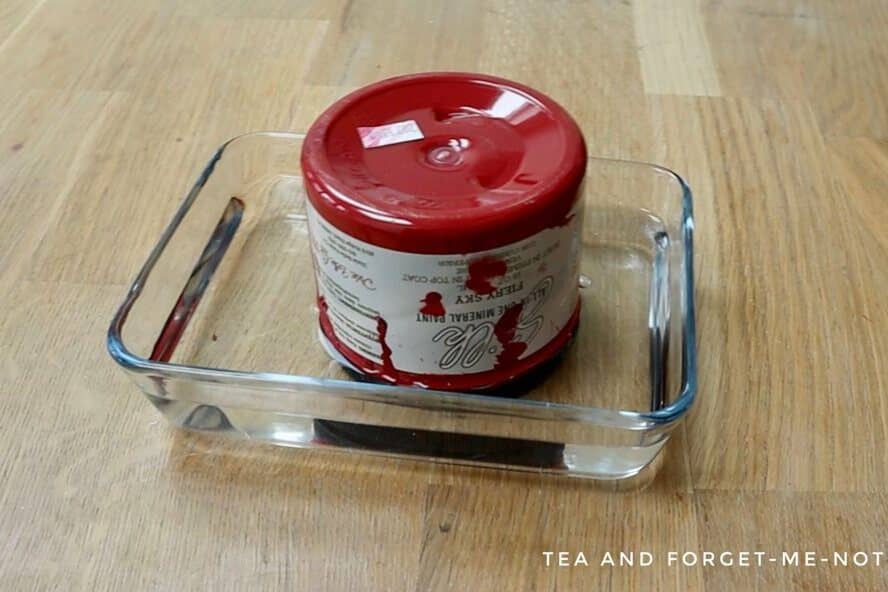How To Clean Acrylic Paint Brushes Easily (8 Ways!)
How to clean acrylic paint brushes
Want to know the best ways to clean paintbrushes? Here’s how to clean acrylic paint brushes after using furniture paint with an acrylic base.
Not sure whether your paint is acrylic? This includes paint such as Fusion Mineral Paint and Dixie Belle Silk Paint, which are acrylic and acrylic-resin based.
Acrylic paints are water-based paints. This makes them dry more quickly than oil paint. So, it’s important to know the best way to remove the dried paint from the bristles of the brush.
Firstly, remove as much of the excess paint as possible.
If the paint is still wet then you can use a clean cloth to wipe off the excess.
If the acrylic paint has dried, you can use a palette knife to gently scrape off as much dried paint as possible from the bristles of the brush.
This makes it easier for other products to get to the inner bristles for a truly clean paintbrush.
This post includes affiliate links so you can easily find the products I use myself and recommend to friends. If you purchase these products, I may earn a small commission at no extra cost to you.
1. Get clean paintbrushes with Scrubby Soap
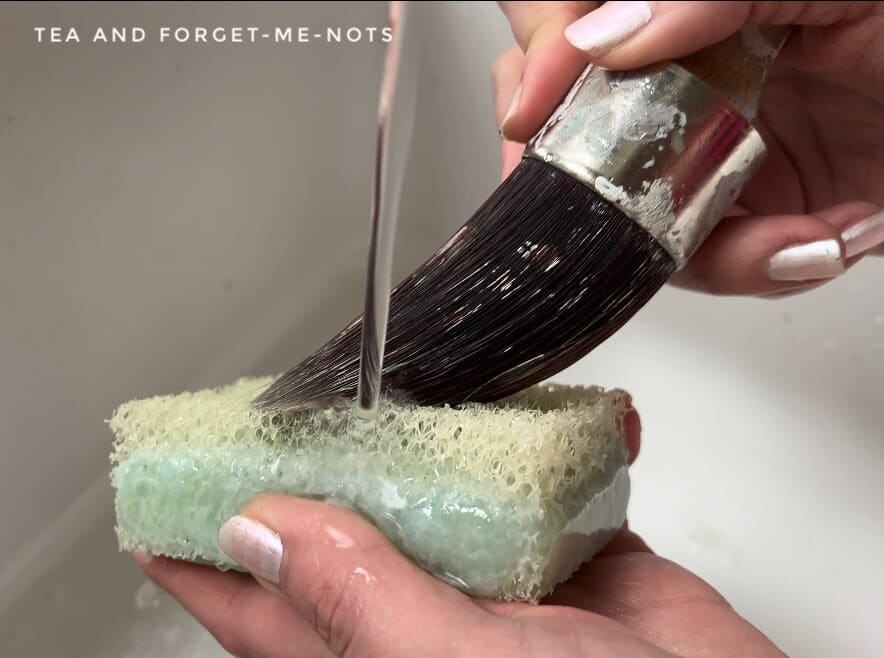
An everyday soap for cleaning paintbrushes, is Scrubby Soap.
Scrubby Soap comes as a bar of natural soap. One side is the soap and the other side is a scrubber.
It’s a great option for cleaning both hands and brushes. You can either hold it in the palm of your hand or in the sink and brush the paintbrush against the scrubbing bristles.
The soap bars are made of all-natural biodegradable oils, rather than using harsh chemicals.
After the paintbrush is clean, you can give it a final rinse in clean water and it’s ready to go.
Due to its usefulness in removing paint, dirt, grease and oil, it can be used by painters, gardeners, and mechanics alike.
2. How to clean paint with dish soap
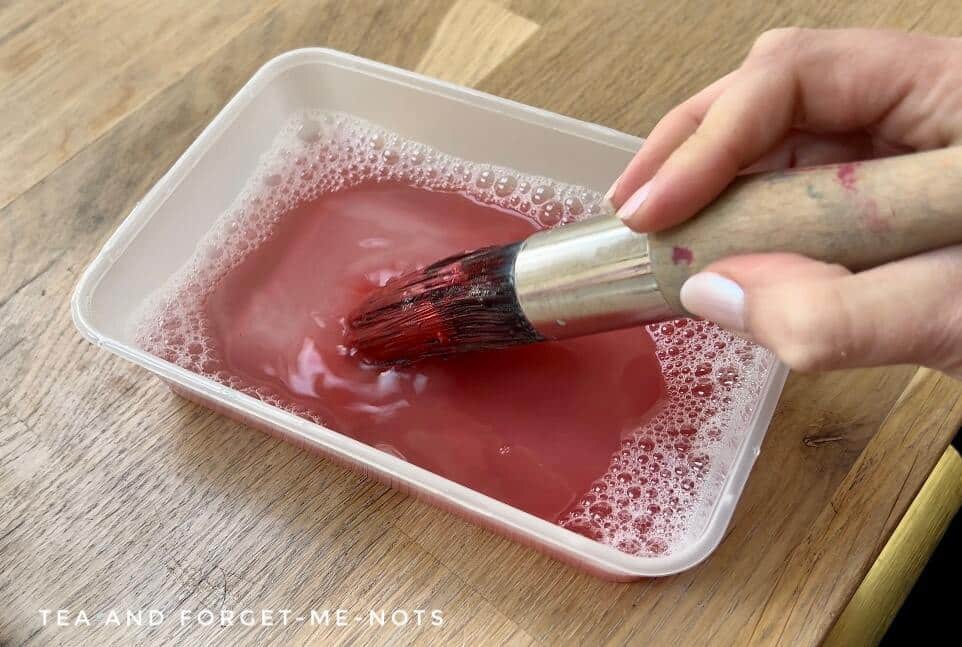
Hand soap or dishwashing liquid is an effective and affordable choice to clean paintbrushes.
Firstly fill a container with warm water and add a small amount of dish soap. Then mix to get soapy water. Dip or soak the brushes in the soapy liquid until the paint loosens.
Once clean, remove the dish soap by rinsing it in clean water.
As dishwashing liquid is a mild soap, you can submerge the bristles for a few hours to help soften any dried paint.
3. Clean As A Whistle
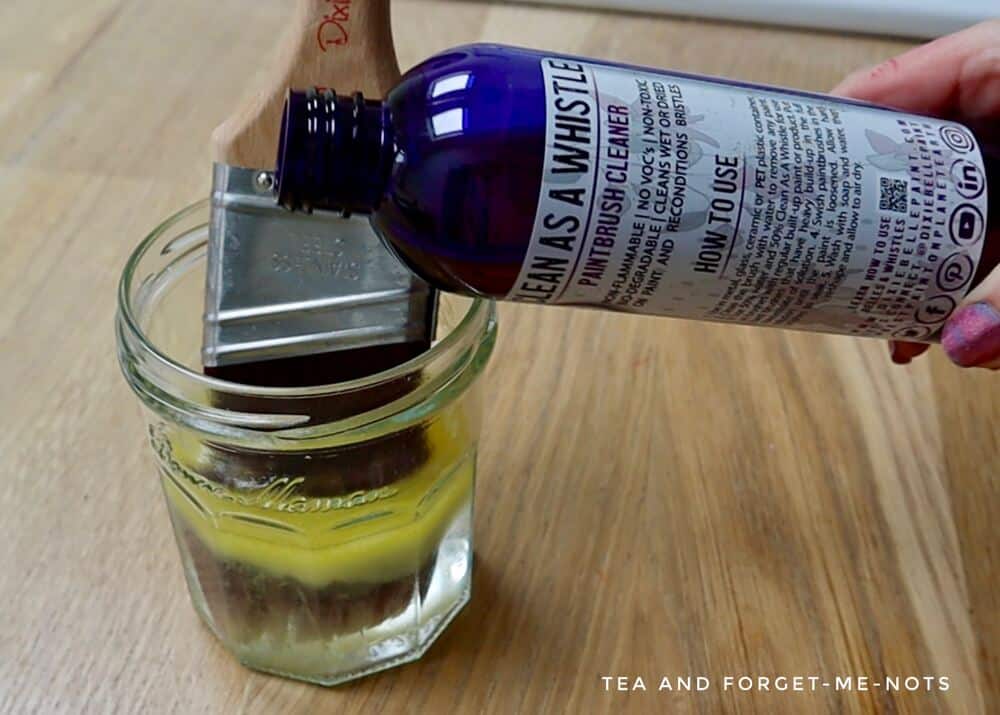
Probably the best option to clean acrylic paint off – Clean as a Whistle.
Clean as a Whistle is a cleaner and brush conditioner that removes build-up and dried paint from brushes. I highly rate it for removing dried acrylic paint from brushes.
To use it you mix it 50-50 with water to make a solution. Then submerge the brush with dried-on acrylic paint in the solution.
It’s important to use this in a ceramic, glass jar or chemical-resistant container.
If the paint is really heavily adhered, you can put it in 100% Clean as a Whistle without the water.
Although that’s usually not necessary for a typical paintbrush cleaning process.
This paintbrush had been forgotten in the fridge. It had been so long that I didn’t even know what project I’d used it on.
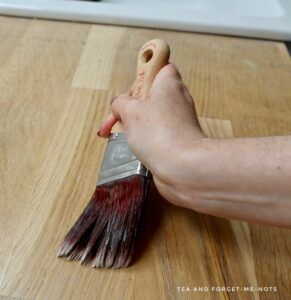
Clean as a Whistle cleaned the bristles up perfectly. And they were restored to their original shape.
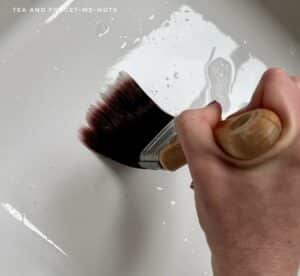
4. Brush out the paint with a comb
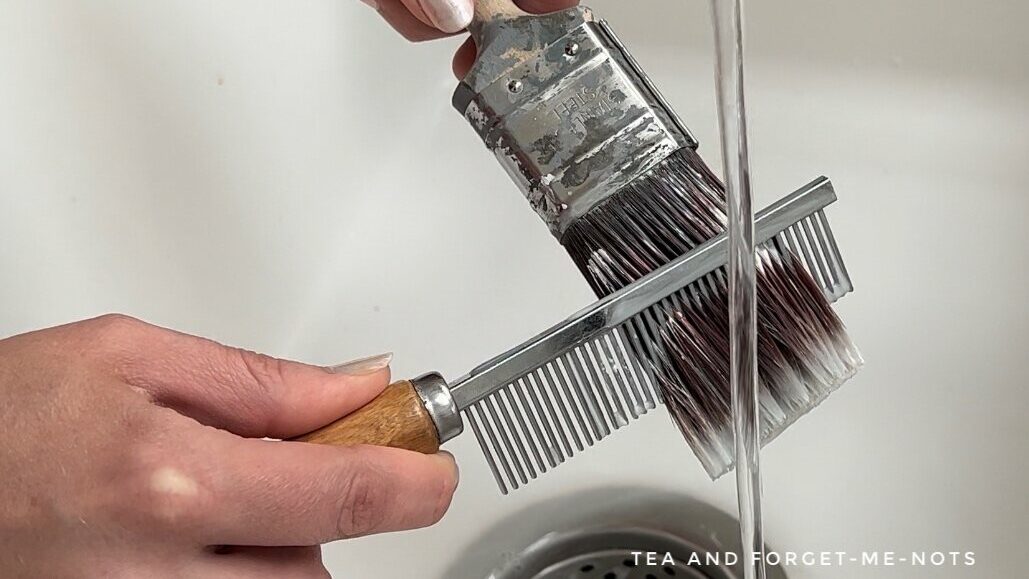
A paintbrush comb is a great choice for helping to brush out acrylic paint. The comb works by separating the bristles, allowing water to deep clean the brush hairs. Combined with flowing water, a comb is an excellent, simple tool.
Bending brush bristles when washing can damage them. Using a comb instead of your hands means you’re more likely to keep the bristles in good shape.
As a bonus, this paint-cleaning comb also has a side for cleaning rollers. The curved sides fit two sizes of roller to easily scrape off excess paint.
5. Get clean paintbrushes with acetone
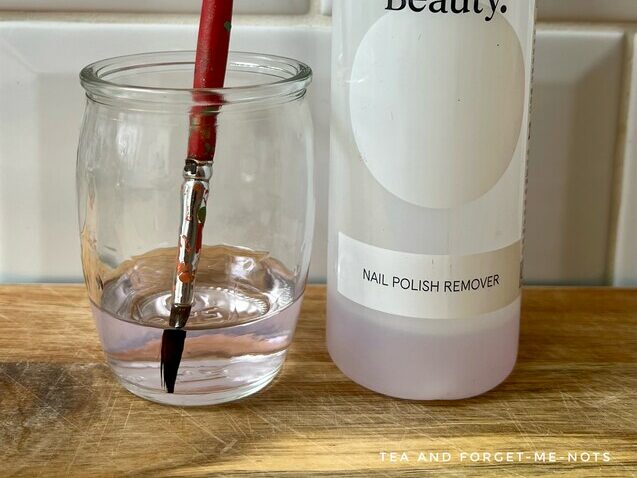
For cleaning acrylic paint, you can use acetone, which is commonly available as a nail polish remover. An acetone solution is suitable for cleaning brushes and most cleaning tasks.
You can either dip the brush and swirl it around or soak the brush in the acetone for a short while. Be careful to let only the bristles and not the ferrule of the brush touch the acetone.
Then simply wash the acetone off with water and let the brush dry.
6. Can you use vinegar to clean paintbrushes?
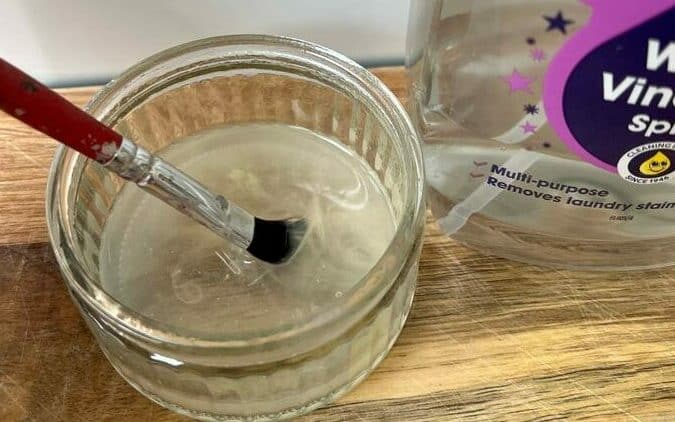
Vinegar can also be used to remove acrylic paint. To use it you can mix a solution of equal parts white vinegar and water.
Vinegar is a mild cleaning agent, so it may not be as effective for removing heavy or dried-on paint. However, this means that it is generally safe for both synthetic and natural hair brushes.
7. How to clean acrylic paint with water
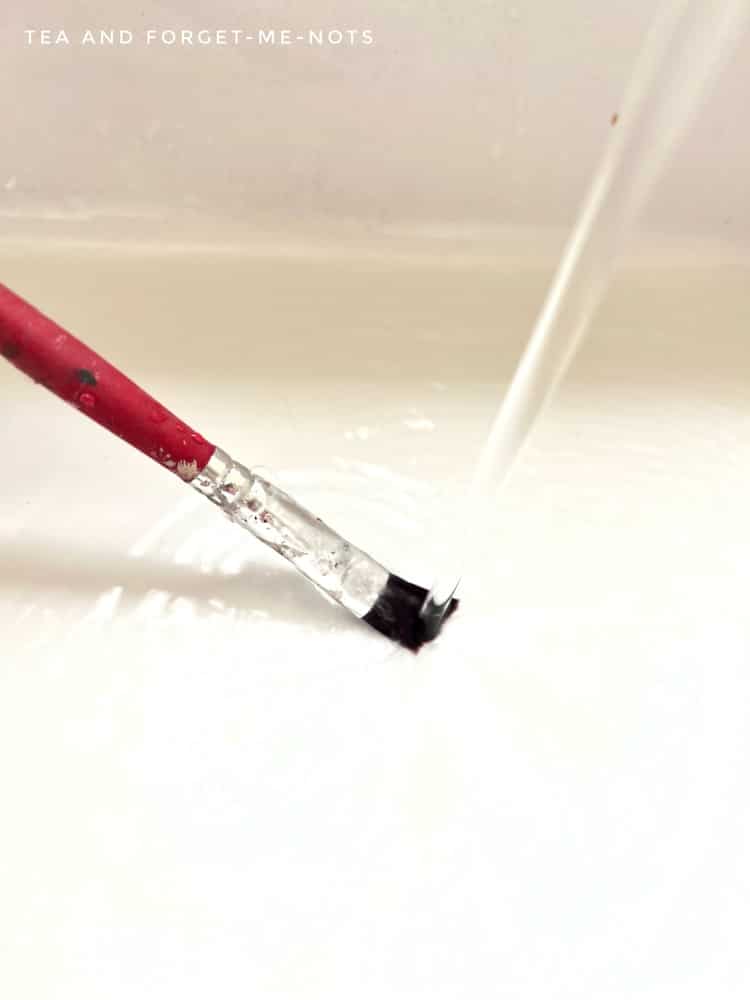
The more excess paint that you can get out of the brush, the easier it is to clean.
You can use your fingers to massage the bristles to loosen the remaining paint under running water. Once the water runs clear, the acrylic brushes should be clean.
I recommend using cold water to clean paintbrushes. Lukewarm water or hot water may cause the paint to set more.
It’s important not to bend the bristles and to gently splay them as you work the paint out.
If your brushes have completely dry acrylic paint, then water alone may not be enough to get clean brushes.
8. Isopropyl alcohol to remove acrylic paint from brushes
Isopropyl alcohol, also known as rubbing alcohol, or surgical spirit can be used for cleaning acrylic paint brushes. It’s best to use at a concentration of 70% or higher.
Simply dip the brushes into a container and move it around to help loosen the paint. You can rinse with water and then repeat the process until the bristles come clean.
Isopropyl alcohol is best to use with synthetic brushes as it can be too harsh on natural hair brushes.
With all of these cleaning options, the next time you have a painting session, your brushes should be good to go. Whether it’s a natural bristle brush or synthetic, any type of bristle can be looked after easily.
If cleaning paintbrushes is something that you struggle with, you might also love this. It’s 4 ways to open a stuck paint lid.
If this information was useful, you’ll love these posts too:
Answers to your questions cleaning paintbrushes
Can you clean acrylic paint with mineral spirits?
Mineral spirits, also known as paint thinner, can be used to clean acrylic paint from brushes.
However, mineral spirits are typically used for oil-based paints. So it can be harsh on certain materials, including some types of synthetic brushes.
How do you remove dried acrylic paint from brushes?
Removing dried acrylic paint from brushes is more challenging than removing wet paint.
Firstly, scrape off excess paint. You can use a palette knife to gently scrape off as much dried paint as possible from the bristles of the brush. You can also loosen it with a clean paper towel and roll the bristles between your fingers.
How to dry your paintbrushes after cleaning
Whether you have a brush with synthetic bristles or natural bristles, how you dry them is key. For the brushes to stay in good condition for a long time, they need to dry with the bristles down.
This is why I created this DIY rack for hanging paintbrushes to dry.
This is so that the excess water doesn’t drip into the metal ferrule which would loosen the glue, which holds the bristles in place.
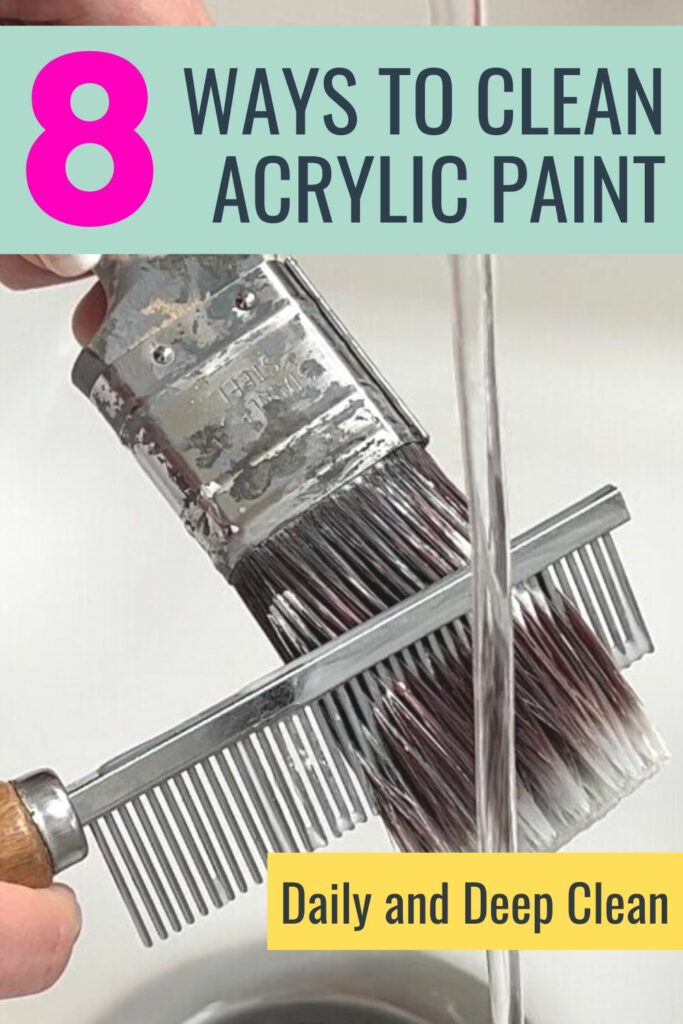
Find More on YouTube
For more tips, tricks and makeovers, check out the YouTube channel.
Hi there! I'm Rachel Bowyer, a passionate DIY enthusiast with a knack for transforming the old into something beautifully new. With a deep love for furniture painting, refinishing, and the art of crafting. I've been documenting my DIY projects and restoration journey since 2018. I specialise in techniques like decoupage, stencilling, and decor transfers. Join me as we explore the world of creativity and home improvement, one project at a time.
